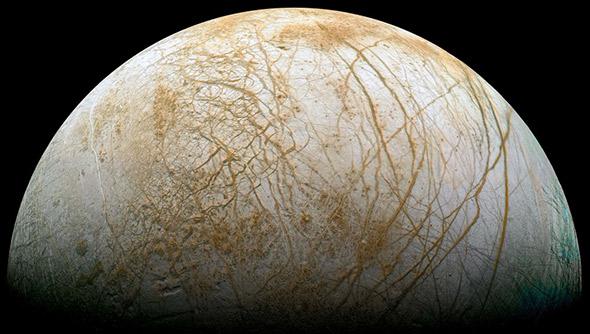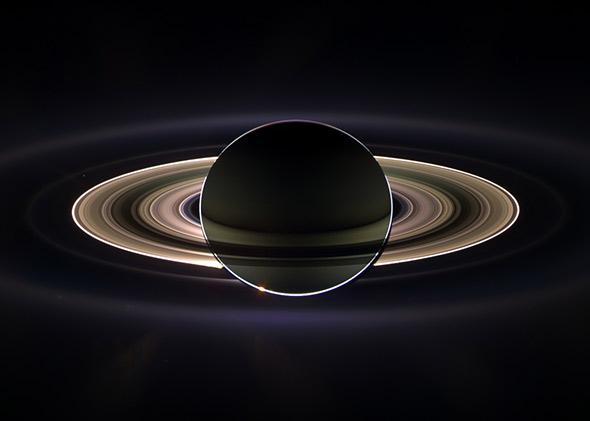The solar system is our home, but we’ve barely looked into most of its rooms.
To be fair, many of those rooms are difficult to get to. Pluto, Eris, Quaoar, and the other small not quite planets beyond Neptune are so far away, we can’t see surface features on them even with our most powerful telescopes. Closer targets still involve a lot of effort, but that doesn’t stop scientists from planning missions, and budget woes can’t stop them from dreaming.
In the wake of the recent arrival of two new probes orbiting Mars and Philae landing on Comet 67P/Churyumov-Gerasimenko, I took an informal poll of planetary scientists. I asked them to identify some of their personal priorities and what they consider the largest scientific goals for the future. While some of the missions they mentioned would require a lot of money (though they would still be much cheaper than a year of war), they are all workable—and in some cases, the probes have already been designed. Our missions to other worlds, successful as they are, tend to be of a few types or probes. In my conversations with these researchers, they have a lot more ambition and creativity and ambitious plans for future exploration.
What follows is not exhaustive. I’ve limited the list to robotic missions and excluded missions to minor planetary bodies: comets, asteroids, Kuiper belt objects like Pluto and its cousins, etc. If we haven’t looked into many of the rooms in our solar system house yet, it’s not due to a lack of imagination.
I’m Your Venus

Courtesy of NASA/JPL
Venus is the closest planet to Earth, both in distance and in size. However, it’s strikingly different in other respects: Its atmosphere is thick carbon dioxide and clouds of sulfur dioxide, and sulfuric acid rains onto a surface hot enough to melt lead. But that doesn’t mean it’s not worth studying. While Mars and the Moon are geologically quiet, “Venus is a live one, with active geology and complex changeable meteorology,” says David Grinspoon, distinguished visiting scholar in astrobiology at the Library of Congress.
Previous missions, including NASA’s Magellan orbiter and the Soviet Venera probes, mapped the planet’s surface. A few even landed and took samples before being destroyed by the high heat and pressure; the Vega 1 mission even included an atmospheric balloon. But most of these serious missions date back decades and were short-lived.
For that reason, Grinspoon helped assemble a proposal for the Venus Climate Mission, an ambitious project that would include multiple atmospheric probes and a balloon for longer-term middle-altitude measurements. “Venus is a laboratory for improving our understanding of many key components of our climate models, like clouds,” says Grinspoon. That particular study is applicable to Earth: “Venus is a vision of the ultimate fate of the Earth without climate intervention.” While our atmosphere has far less carbon dioxide, accelerated climate change could make our world far more Venus-like in the future.
Boating on Titan
It’s swathed in a nitrogen-rich atmosphere, with seas and rivers that change with the turn of seasons, and its air is hazy with many of the same chemicals that cause smog. Titan’s resemblance to Earth ends there, though: Saturn’s largest moon is cold enough to have boulders of ice, its lakes are made of methane and other hydrocarbons, and even on a cloudless day, the sky is nothing but an orange fog, hiding the giant planet from view.

Courtesy of NASA/JPL/Space Science Institute
Titan is the only place in the solar system other than Earth with persistent lakes (called mares, pronounced “MAR-ays”), and that’s why scientists such as Sarah Hörst from Johns Hopkins University would like to land a boat there. The Titan Mare Explorer is one part of a larger proposed mission called the Titan Saturn System Mission. In addition to the boat, TSSM would include an orbiter and a balloon, which could stay aloft for a very long time in Titan’s dense atmosphere. Hörst points out that while Titan has diverse environments like Earth, the fact that the atmosphere is opaque to visible light makes many of our usual study methods “nearly useless.” And who wouldn’t want to have a boat on an alien sea and a balloon in an alien sky?
Europa, Europa
Several of the moons orbiting Jupiter and Saturn consist of an icy shell over an ocean of liquid water. Each ocean is kept from freezing because the gravity of the host planet yanks harder on the near side than the far side of the moon, slowing the moon’s rotation and creating friction on the inside. “These icy moons, as we now realize, are some of the most intriguing places for habitability and hopefully life!” says Bobak Ferdowsi, systems engineer at NASA’s Jet Propulsion Laboratory (also known as the guy with the star-spangled mohawk).

Courtesy of NASA/JPL/Ted Stryk
Saturn’s moon Enceladus and Jupiter’s moon Europa are particularly exciting in that regard. Ferdowsi is working on the Europa Clipper concept, a spacecraft designed to perform long, looping orbits around Jupiter. “The elliptical orbit [of the probe] would allow us to perform many flybys of the moon at low altitude,” says Ferdowsi. The path would help preserve the probe from harmful radiation from Jupiter, giving us a good view of both sides of Europa to “help us identify surface features and potentially even plumes.” Flying low over the surface, the Clipper could scoop up molecules from the plumes and analyze them to see if they contain organic molecules and other chemicals. Since those particles originate from below the surface, they might tell us whether the ocean is truly habitable.
The Waters of Mars
Of all planets (other than Earth), none have been more studied than Mars. Two rovers and five orbiting probes are actively working on the planet, not to mention 19 previous flyby, orbiter, and lander missions. These make humanity’s presence on Mars greater than on any other world. It’s no wonder: The Red Planet is just Earthlike enough to be a possible colonization goal, if we can find a way to get past its thin atmosphere and lack of surface water.
There’s evidence that Mars once was warmer and wetter than today, which is why John Moores of York University wants to conduct climate studies there similar to those on our planet. “Earth’s ice cores may preserve a record of climate that goes back over a million years, but on Mars there is a record that is far longer and easier to read” due to less dramatic weather, he says. Landing a probe on the northern Martian ice cap to use radar or drill down “would tell us about the last 5 to 10 million years of Mars’ history, and whether the planet periodically comes back to life in a reverse of our Ice Ages.”
Polar landers aren’t the only idea for Martian atmospheric studies. NASA researchers have designed gliders and balloons to sample molecules in the air at various altitudes. Such missions could help us understand where Mars’ weirdly high methane content comes from, since as far as we can tell, there aren’t methane-burping Martian microbes like there are on Earth.
The Ice Giants
The Voyager 2 probe visited the giant planets Uranus and Neptune in the late 1980s, but it is the only mission to those worlds. There’s a lot we don’t understand about these planets yet, including their incredibly high winds. “I’d love to see a Cassini-style mission to Neptune and its moons,” says Michele Bannister, postdoctoral researcher at the University of Victoria, referring to the wildly successful mission to Saturn.
The reasons to study Neptune go beyond our solar system, Bannister says: “Neptune-size exoplanets, ice giants, are incredibly numerous—and we have two ice giants right here!” Additionally, Neptune’s moon Triton probably originated as a Kuiper belt object that was captured by Neptune’s gravity, and therefore a larger cousin to Pluto, Eris, and other far-out icy bodies. As with Europa, Triton could harbor an under-ice ocean—Voyager 2 witnessed plumes during its brief passage. Both Neptune and Triton “are active worlds changing on the time scale of our own lives,” says Bannister. Orbiting missions along the lines of Cassini are able to see those changes by sticking around for years.
Space. Space. Wanna Go to Space.
When I was little, I pored over pictures from Voyager 2 and other missions. It was my first scientific awakening: the realization that these planets and their moons were worlds in their own right, with fascinating differences revealing much about the nature of the solar system. We should keep exploring.
